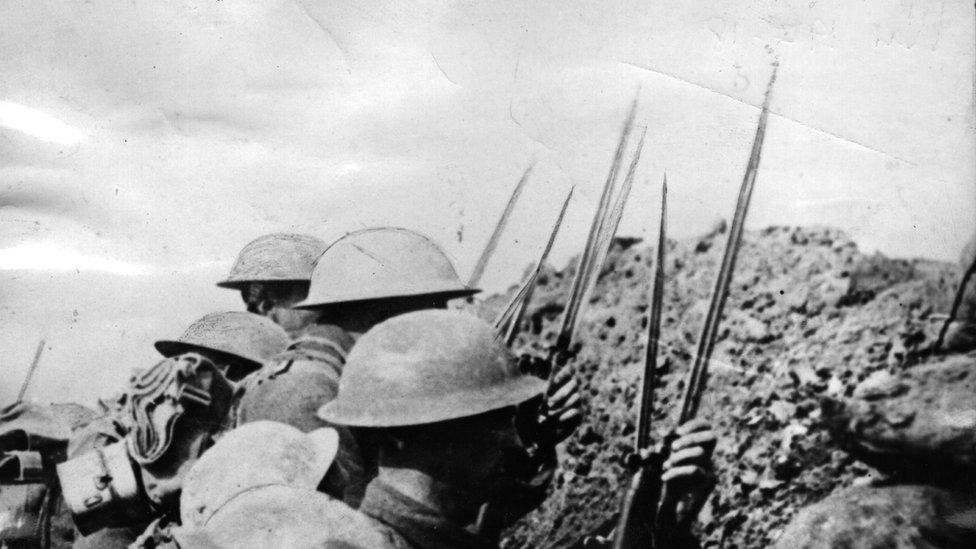Battle of the Somme: The Irish nationalists who fought for king and crown
- Published
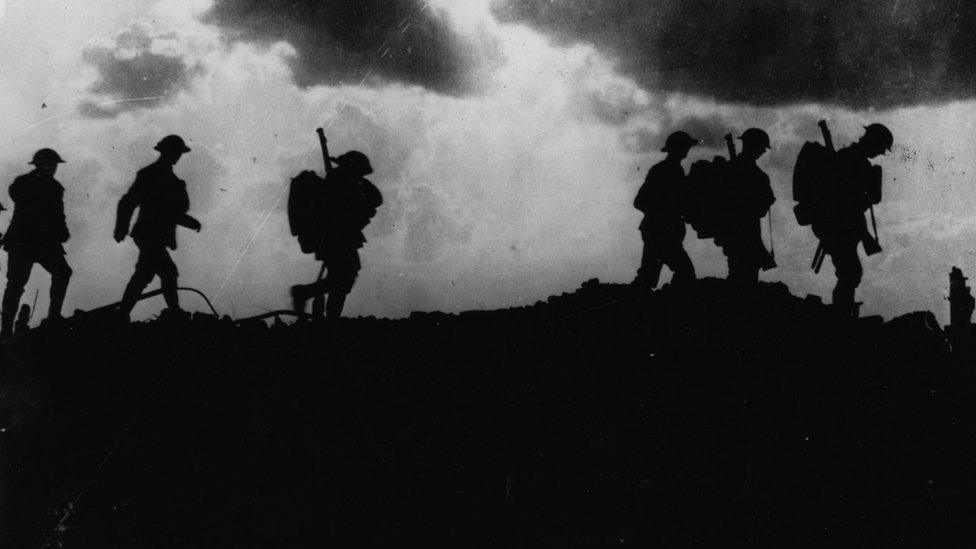
The sudden outbreak of World War One on 3 August 1914 put the 'Irish Question' on hold
The 16th Irish Division which saw service at the Battle of the Somme was, like its Ulster equivalent, the 36th Ulster Division, a product of rising tension in Ireland during the Home Rule crisis of 1912-14.
In 1913, Sir Edward Carson formed the Ulster Volunteer Force (UVF) to oppose a Dublin parliament, by force if necessary.
Irish nationalists, incensed at any attempt "to mutilate the nation", formed the much larger Irish Volunteers.
Up to 170,000 strong, the new force was determined to "defend Ireland's rights".
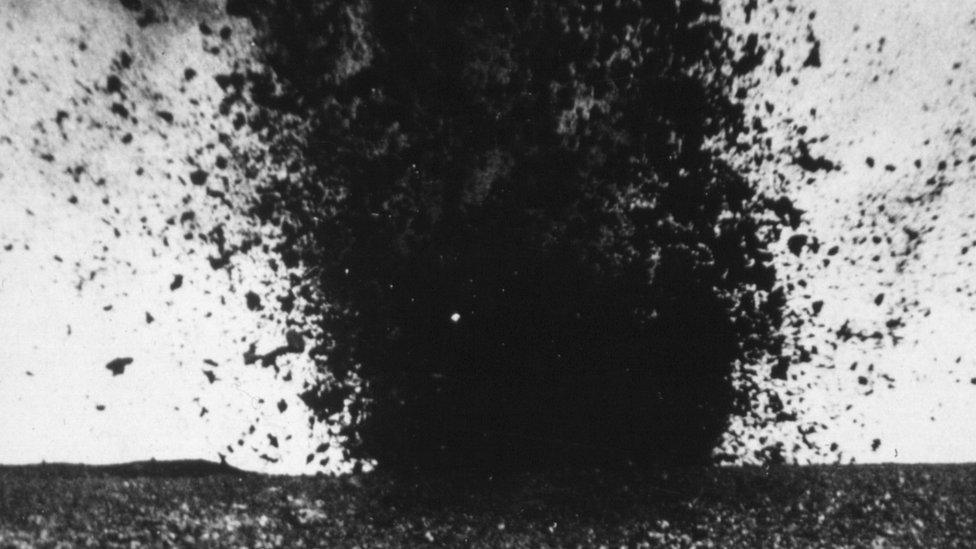
A shell bursts at the Somme in 1916
As both forces acquired arms from Imperial Germany, Ireland seemed on the brink of civil war.
But the sudden outbreak of World War One on 3 August 1914 put the 'Irish Question' on hold as John Redmond and Carson pledged their rival armies to the British war effort.
Redmond, flushed by his success in having the third Home Rule Act placed on the statute book - it was suspended for the duration of the war - urged Irish nationalists "to go wherever the firing-line extended".

The Battle of the Somme would drag on for more than four months
Moved by the fate of "gallant little Belgium" and the need for Irishmen to win British goodwill for all-Ireland Home Rule, the nationalist leader told volunteers at Woodenbridge, County Wicklow, on 18 September 1914: "This war is undertaken in the defence of the highest principles of religion, morality and right…"
Redmond's hopes of a distinctively 'Irish brigade', based on the National Volunteers, met with rank hostility from the pro-unionist Kitchener and the War Office.
While the UVF were effectively absorbed into the Ulster Division, the British military élite was determined to prevent the creation of an Irish army.
By the end of 1915, the 16th Irish had joined the Ulstermen in France.
Although the tragedy of the Somme is forever linked to the blood-sacrifice of 'Carson's Army', the 16th (Irish) Division also took part in that horrific battle.
The 1st battalion of the Royal Dublin Fusiliers were cut to pieces by machine-gun fire as they tried to take the German stronghold of Beaumont Hamel on 1 July. It was later to fall to the 10th Dublin Fusiliers.
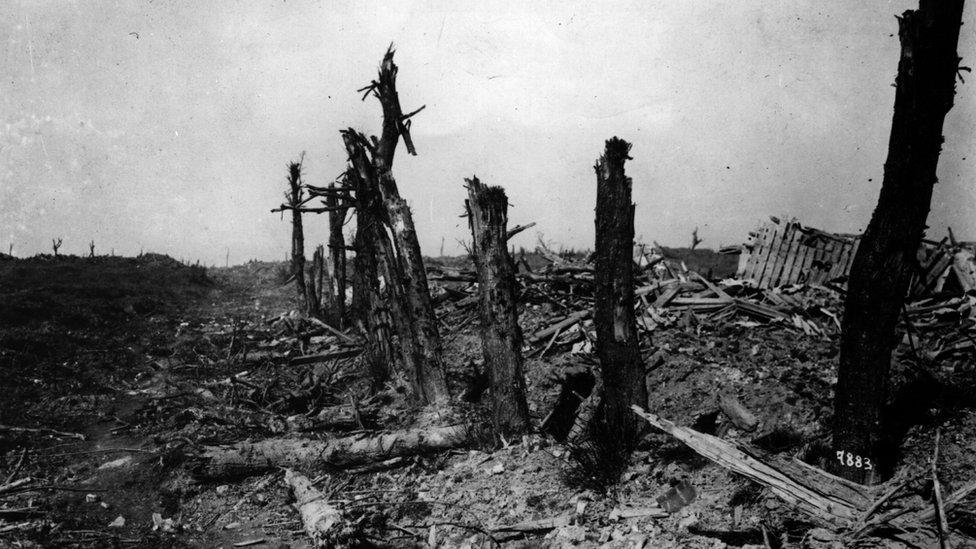
The Dublin Fusiliers were unable to breach the German lines near the village of Beaumont Hamel
The 16th Irish made their greatest impact in the later stages of the battle at Guillemont and Ginchy on 6 and 9 September 1916.
Responsibility for attacking the German stronghold of Guillemont fell to the 7th Leinsters and 6th Connaught Rangers (which included 600 nationalists from west Belfast).
As they made their way through the aptly-named 'Death Valley', the Connaughts, led by Lt JFB O'Sullivan, caught the Germans by surprise .
It was, an observer wrote, "one of the most astonishing features of war… a wild and irresistible assault".
Redmond's army had won its first battle honour as well as its first VC, awarded to Pte Thomas Hughes of County Monaghan who, despite being wounded, had taken out a machine-gun post. But the victory was a costly one: almost half the 2,400 Irish troops involved were killed.
After Guillemont, the focus shifted to the nearby village of Ginchy.
General Haig felt its capture was essential to any allied breakthrough.
To catch the German defenders by surprise the attack was planned for 16:45 local time on 9 September 1916 following a ten-hour artillery barrage.
The 16th's assault was led by the 6th Royal Irish Regiment and the 8th Munsters who advanced in four waves, followed by the Connaughts and 7th Leinsters. Many of the British shells had fallen short of the German lines.
No sooner had the Irishmen left their trenches than they were cut down by remorseless machine-gun fire - "a hurricane of steel and lead".
Some 450 of the 1,000 assault troops were killed or wounded.
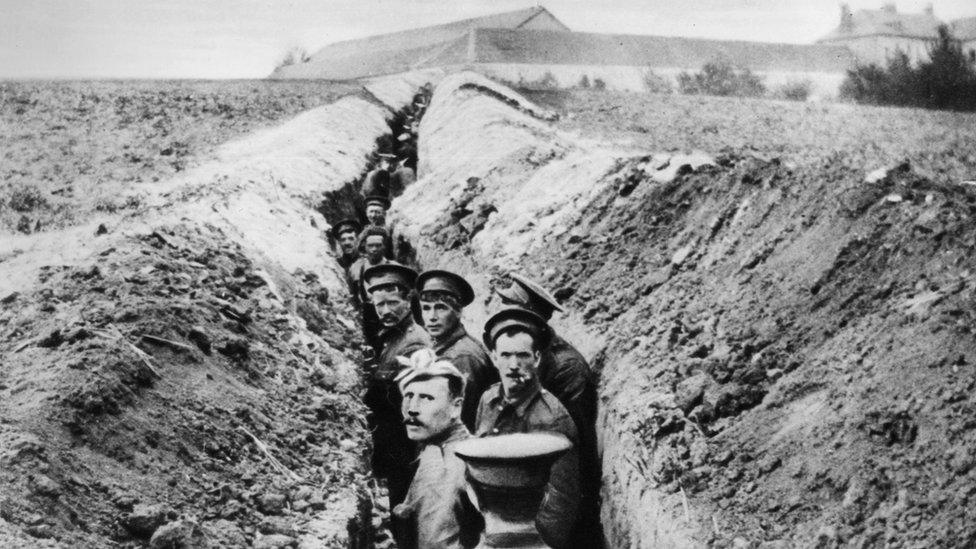
Soldiers lined up in a narrow trench during World War I
Among the dead was the poet and former Home Rule MP, Professor Tom Kettle, 36, killed when leading his men into Ginchy village.
Kettle, who had experienced the Easter Rising at home, predicted that the executed rebel leaders would "go down as heroes and martyrs" while he would go down - if at all - as "a bloody British officer".
Like Redmond, he expressed the hope that the shared experience of Irishmen from north and south in the war might lead to "the reconciliation of Protestant Ulster with Ireland and... of Ireland with Great Britain".
Kettle refused to leave the appalling trench conditions for a safer posting.
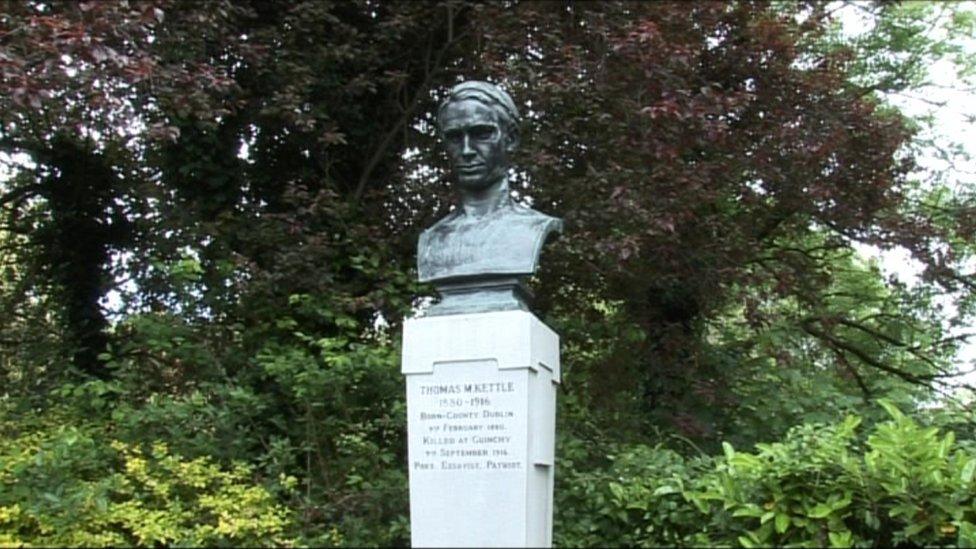
A bust of WW1 soldier, scholar and Irish nationalist MP Thomas Kettle stands in St Stephen's Green in the centre of Dublin
"I have chosen to stay with my comrades," he confided to his brother.
"I am calm and happy and desperately anxious to live."
He was not hopeful, however.
In a poignant sonnet to his infant daughter on the eve of his death, the young nationalist officer foresaw that his involvement in "England's War" might be misunderstood:
"So here, while the mad guns curse overhead,
"And tired men sigh, with mud for couch and floor,
"Know that we fools, now with the foolish dead, died not for flag, nor king, nor emperor,
"But for a dream, born in a herdsman's shed,
"And for the secret scripture of the poor."
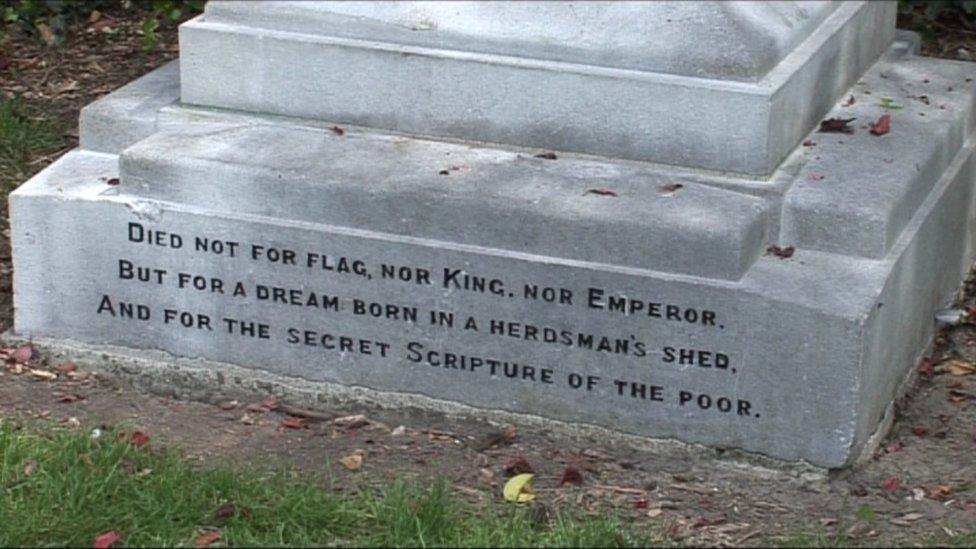
The inscription on the monument to Thomas Kettle is his poem written on the eve of his death
Nine months later in June 1917, Irishmen from north and south would fight alongside each other for the first time in the Battle of Messines in Belgium.
Demobbed in 1919, the survivors of Redmond's "Irish Brigade" would return to an island transformed by the impact of the 1916 Rising.
Nationalist veterans would find themselves ignored, marginalised and "airbrushed out of history" after the War of Independence in the south.
Their world had changed forever.
Dr Éamon Phoenix is a political historian and a member of the Taoiseach's Expert Advisory Group on Centenaries.
- Published16 June 2016
